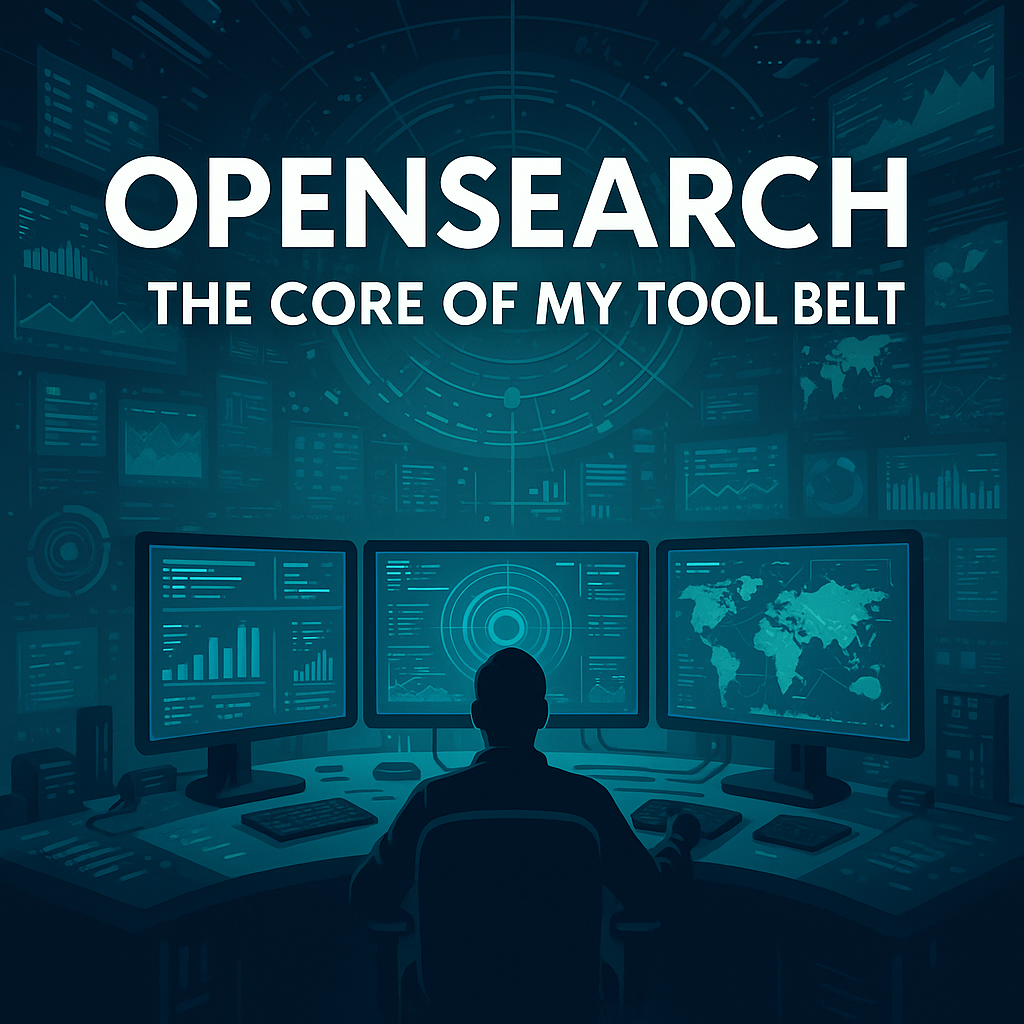OpenSearch - The Core of My Tool Belt

When I talk about OpenSearch, I am talking about the part of my system that remembers. It is not just a database. It is the memory engine that holds everything I have ever taught the system to see.
I started using Elastic long before OpenSearch existed, back when the interface still looked like a science experiment and every upgrade felt like walking across a moving bridge. I stuck with it because it gave me something most systems could not: a way to search and reason about data in near real time. When Amazon forked Elastic into OpenSearch, I followed that path, not because of branding, but because it preserved what I valued most — open access, transparency, and control.
Why I Use It
OpenSearch gives me a way to view my world over time. Every log line, every metric, every CDR, and every device event lands there, timestamped, structured, and searchable. When something goes wrong in the network, I can replay the story exactly as it happened.
It is the core of my tool belt because everything else in the stack orbits around it. Logstash feeds it. The Go pollers enrich and shape what they receive. Grafana visualizes its heartbeat. But OpenSearch is the one holding the truth.
It scales the way I think. I can work at the level of a single ONT or zoom out to see a month of network behavior in a single query. I can run ten indexes for ten different data types and still cross-correlate them in milliseconds. It is both a microscope and a telescope.
My History With It
I have been indexing telecom data since before most people in this industry knew what JSON was. I started with early modem telemetry, DSL metrics, and provisioning logs, all flattened into Perl scripts and dumped into MySQL tables.
Then I met Elasticsearch, and suddenly all of that could be searched, graphed, and cross-referenced. I could take a MAC address, trace it through a dozen systems, and find its full life story in seconds. Over the years, I built dashboards that told real stories: who was down, when it started, what triggered it, and what changed just before it happened.
Of course, it does help that I worked at Elastic as a support engineer for nearly 3 years right at the IPO threshold.
When Elasticsearch turned into a closed ecosystem, I moved to OpenSearch and never looked back. It was like getting my keys back to the engine room. Now I can build exactly what I need, how I need it, and at a scale that fits my environment, not someone else’s licensing model.
What I Have Already Pulled Off
With OpenSearch as the backbone, I have ingested and correlated data from systems that were never meant to speak to each other.
I have it tying together ONT logs, SS7 CDRs, DHCP churn, provisioning changes, and ticketing data. I can tell when a customer’s line went down, how long it stayed down, which optical path it followed, and what the DSLAM or PON port saw in the same moment.
I built the RFPhantom poller in Go to feed it DOCSIS metrics from thousands of modems in under half a minute. I built the ONT log enricher that cross-checks events against CMS and enriches them in real time without bringing the system to its knees. I built the indexes that let me track trends, not just incidents.
This means I can see the living network, not just snapshots. OpenSearch turned raw logs into a time-aware narrative engine.
Why It Works For Me
I like systems that can grow without collapsing. OpenSearch is built for that. It shatters into shards, distributes across nodes, merges segments, and keeps pace with whatever you throw at it. You can start with one node and grow to ten without rewriting a thing.
For me, that is critical. I do not have a hyperscale data center. I have commodity hardware, solid engineering, and a need to make every core count. OpenSearch lets me expand horizontally and tune performance as I go.
When I optimize mappings, set shard counts, and tune refresh intervals, I am not chasing benchmarks. I am making sure the data can breathe, merge cleanly, and scale into tomorrow’s load without stalling today’s queries. That is the kind of scalability that matters in the real world — the kind that keeps working while you are still building.
k-NN Will It Help?
The next frontier for me is k-NN search inside OpenSearch. It is one of the few features that actually moves the needle for what I am building.
Right now, I can find patterns by logic and by correlation. With k-NN, I can add similarity — the ability for the system to recognize shapes in the data that look like problems it has seen before.
It is not a prediction in the AI sense. It is memory at scale. When a certain combination of optical drift, temperature swing, or call failure cluster appears, k-NN can say, “I have seen this before,” and point me toward the last time it happened and what fixed it.
That is where this is heading. From correlation to recognition. From storytelling to intuition. From data that describes to data that remembers.
Closing Thoughts
OpenSearch is not just a tool I use; it's a way of life. It is the center of gravity for everything I have built. It gives shape to noise and history to signal.
When people ask what powers my systems, they expect to hear a long list of microservices or some glossy AI framework. What they get instead is OpenSearch — open, honest, and powerful enough to hold the mind of an entire network.
This is the foundation. Everything else I build, from middleware to the eventual interface, starts and ends here.
Up Next
Linux – The Real Foundation
--Stay tuned
-Bryan